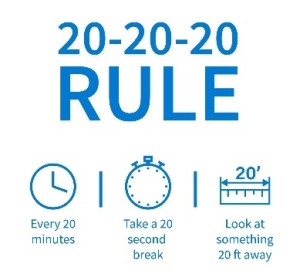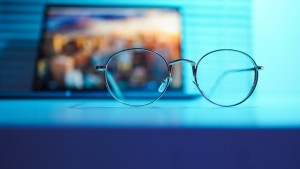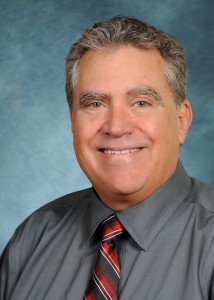Lazzaro Medical, a Boulder-based medical device company seeking to help millions of people suffering from Tracheobronchomalacia (TBM), received a $1 million strategic investment from Northwell Health, New York State’s largest healthcare provider.
The investment aims to support restoring healthy breathing in previously untreated patients while addressing a large untapped market with Lazzaro Medical’s Robotic Minimally Invasive Tracheal Repair (MITR™) surgery using its newly patented LM Scaffold System™. Pioneered by world-renowned, robotic thoracic surgeon Dr. Richard Lazzaro, the system is designed to increase safety and decrease time to perform this procedure.
READ — Robots Tapped as Companions for Seniors
“In the United States, TBM is estimated to be present in half of the nation’s 16 million COPD patients. Previous treatment was worse than the disease for many potential patients,” said Dr. Lazzaro, Co-Founder and Chief Medical Officer of Lazzaro Medical. “The LM Scaffold System™ will dramatically reduce operating times by an estimated 50% and shorten patient recovery time from months to weeks.”
The funding will be used to prepare the company’s 510K FDA submission and support its forthcoming commercial launch. Subsequent rounds will support Lazzaro Medical’s platform expansion, which includes a game-changing diagnostic endoscope, comprehensive training programs for thoracic surgeons and additional devices to further simplify the procedure.
“Dr. Lazzaro’s work is truly life-changing for so many people,” said Richard Mulry, President & CEO of Northwell Holdings. “We look forward to seeing the company’s progress and are delighted Northwell can play a part in supporting these efforts.”
With Northwell’s strategic investment, Lazzaro Medical has raised a total of $2 million from investors, including a $250,000 grant from the Global Business Development division of the Colorado Office of Economic Development and International Trade (OEDIT) Advanced Industries Accelerator Grant Program. Bolstering Lazzaro Medical’s remaining $3.5 million convertible note offering is an investment commitment from another strategic partner. These strategic partner investments help further validate Lazzaro Medical’s mission of helping people breathe better again.
“We’re thrilled to welcome this strategic investment from Northwell, a world-class leader driving innovation in patient outcomes and care,” said Rob Israel, Co-Founder and CDO of Lazzaro Medical. “We’ll be able to expedite our regulatory process and bring our LM Scaffold System™ solution to market more quickly while adding to our growing patent portfolio.”
Lazzaro Medical was founded in 2019 with a mission to help millions breathe easily again by bringing awareness to TBM as a largely under or misdiagnosed disease and offer a less invasive and risky repair option to those suffering from this degenerative condition that causes the collapse of the airway due to the softening of cartilage in the trachea.
ABOUT LAZZARO MEDICAL
Lazzaro Medical is a Boulder, Colorado-based medical device company on a mission to restore healthy breathing in millions of people suffering from tracheal and bronchial maladies with a transformative platform of life-changing, minimally-invasive, robotic procedures, devices, and diagnostics. Co-Founded by Dr. Richard Lazzaro, a world-renowned thoracic surgeon with 35 years of specialized expertise in minimally invasive and robotic thoracic surgery, the company’s platform is based off his groundbreaking firsts in robotic thoracic surgery and his leading the largest tracheobronchomalacia (TBM) programs in the nation. For more information on Lazzaro Medical, please visit Lazzaromed.com, or follow @Lazzaro Medical on LinkedIn.
ABOUT NORTHWELL HEALTH
Northwell Health is New York State’s largest health care provider and private employer, with 21 hospitals, 850 outpatient facilities and more than 12,000 affiliated physicians. We care for over two million people annually in the New York metro area and beyond, thanks to philanthropic support from our communities. Our 80,000 employees – 18,900 nurses and 4,900 employed doctors, including members of Northwell Health Physician Partners – are working to change health care for the better. We’re making breakthroughs in medicine at the Feinstein Institutes for Medical Research. We’re training the next generation of medical professionals at the visionary Donald and Barbara Zucker School of Medicine at Hofstra/Northwell and the Hofstra Northwell School of Nursing and Physician Assistant Studies. For information on our more than 100 medical specialties, visit Northwell.edu and follow us @NorthwellHealth on Facebook, Twitter, Instagram and LinkedIn.



 Dr. Scott Edmonds is Chief Eye Care Officer and Senior Medical Advisor at UnitedHealthcare, Co-Director of Low Vision Contact Lenses at Wills Eye Hospital, Chief Medical Officer at March Vision Care, and Partner at Edmonds Consulting, LLC.
Dr. Scott Edmonds is Chief Eye Care Officer and Senior Medical Advisor at UnitedHealthcare, Co-Director of Low Vision Contact Lenses at Wills Eye Hospital, Chief Medical Officer at March Vision Care, and Partner at Edmonds Consulting, LLC.